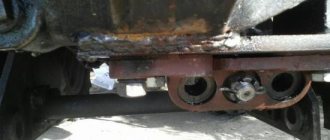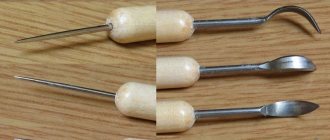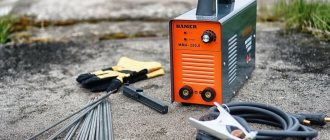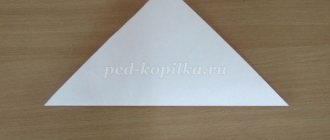The question of how to make an all-terrain vehicle from a walk-behind tractor with your own hands is very relevant for farmers and even owners of small plots. This technique is an assistant for all occasions, since it is very easy to attach additional equipment to it, which makes the motor cultivator as functional as possible. Traditionally, this technique is used in garden plots and vegetable gardens. As a rule, a walk-behind tractor has a lot of work to do, since it can plow the ground, collect leaves, and pile up hay. But the equipment sits idle for some time. During this period, you can occupy her with other work. For example, you can make an all-terrain vehicle out of it. All it takes is a little work to turn your farm equipment into a universal all-terrain vehicle. At the same time, some equipment is very easy to work with. There are models that are modified by the attachment. This option is as easy as possible to use.
It is more convenient to make an all-terrain vehicle from a Neva walk-behind tractor. A special feature of this equipment is that the manufacturer allows you to install universal attachments on it. This makes it possible to modify the motor cultivator as quickly as possible. Thus, a swamp vehicle can be made from a walk-behind tractor in a matter of minutes. However, to transform farm equipment, you must have an all-terrain attachment to the walk-behind tractor at hand.
Manufacturers offer various additional equipment for this type of equipment. But such consoles are not cheap. For those who are not ready to spend thousands of rubles on turning a walk-behind tractor into an all-terrain vehicle, you can try making the equipment yourself. There are no particular difficulties here, but some skills are still required. First of all, the master needs to understand technology and be able to work with a welding machine.
Recommendations for assembling a walk-behind tractor
Firstly, it is worth saying that by creating such equipment yourself, you can take into account those nuances that purchased serial devices simply cannot have. For example, it is possible to combine the functions of a plow and snow removal in one device; it is possible to supplement it with a useful trailer.
All key parameters are usually shown in do-it-yourself walk-behind tractor drawings, which should be done in as much detail as possible.
As a rule, there are no uniform sizes for a walk-behind tractor. You can find models where it barely reaches 10 kg.
These are usually created for a small amount of work on small plots of land. And there are others that are already similar in their power to mini tractors. This technique is capable of reaching speeds comparable to a full-fledged vehicle, up to 60 km/h.
Diagram templates are widely available in various sources. You just need to choose the one that will be as similar as possible to the expected result and edit it depending on your needs.
To create equipment, you don’t have to be an engineer or have a special technical education; you just need to carefully study the video examples that are in the public domain, and also select the most suitable drawing.
Types of attachments
The main motivation for purchasing any walk-behind tractor is cultivating the land. The designers paid maximum attention to this task.
The list of attachments offered for sale includes:
- plow;
- harrow;
- hiller (a type of plow with a V-shaped or disc-shaped plowshare);
- cutter;
- potato digger;
- potato planter;
- mower
Plows
The evolution of swing devices is embodied in the following types of devices:
- Standard plow . A wide knife - a ploughshare of such a device - loosens the ground when plowing, cutting off the roots of weeds. A bent sheet - the blade turns over the layer of earth.
The method of attaching a standard plow to a walk-behind tractor is illustrated in Figure 1. The main parts of this device: ploughshare, blade, stand, heel, field board are visible in Figure No. 2.
- Reversible (rotary, double-revolved) plow . Two plows are mounted on a common frame at an angle of 90 or 180 degrees. Their dumps are directed in different directions. In the working position, one of them plows the ground, and the second is located on the side. After passing the furrows, they are swapped by pressing (or removing) the latch and turning to the side. Thanks to this, the operator does not have to return to the beginning of the section each time, making an idle run.
- Zykov's plow . An improved version of the classic plow. It differs from it in the modified geometry of the plowshare-mouldboard surface. Thanks to the modification, it turns over the soil layer well and crumbles it.
Designed and produced in Ukraine, the Zykov plow is still rare in Russia. Only a few DIY enthusiasts are trying to reproduce it in home workshops.
Harrows
Soil turned over by a plow is a “semi-finished product” that requires finishing. For this work, a harrow is used, which breaks up large clods and levels the soil.
There are two types of harrows:
It should be noted that disc designs perform harrowing better and cleaner than toothed ones.
Hillers
This type of attachment for walk-behind tractors is designed for loosening the soil and creating furrows during sowing, planting seedlings and weeding.
By design, hillers are:
- single-row and double-row (with fixed and variable working width);
- disk;
- rotary (active);
Single-row hillers with a fixed width (25-30 cm) are designed to work with light walk-behind tractors (up to 4 hp). Variable working width and double-row installation allow you to use these devices on more powerful mechanisms and use them to process beds of different widths.
Rotary (propeller) hillers do not require the use of a hitch, since they are installed instead of walk-behind tractor wheels. Toothed discs of a special configuration loosen the soil well and pull out weeds between the rows.
Milling cutters
Can perform several operations:
- loosen and level the ground;
- crush lumps of soil and mix its layers;
- mix fertilizers;
- destroy weeds.
The walk-behind tractor usually comes with universal cutters equipped with saber-shaped knives. They are comfortable to work on soft soil. For dense and weed-filled soil, mechanisms called “crow's feet” are designed.
Read also: Paste for soldering copper wires
The high mechanical strength and special shape of the cutters allows them to loosen neglected areas, pulling out weeds by the roots. In the fall, they are used to destroy insect pests that have hid in the ground for the winter.
Potato planter and potato digger
The main crop of our fields and summer cottages - potatoes - requires significant labor input during planting and harvesting. To mechanize these operations, two mounted units are used: a potato planter and a potato digger.
The first is equipped with a small plow that makes a furrow. Immediately behind it, a hopper is installed on the frame, from which the potatoes fall into the ground at regular intervals. Two inclined hiller discs attached to the back of the frame fill the bed. So, three operations are performed at once in one pass.
Anyone who has dug potatoes with a shovel at least once will certainly appreciate the usefulness of this simple device. The potato digger, mounted on the hitch of a walk-behind tractor, consists of a plow with steel rods welded to it. Lifting the soil under the bushes, he carefully removes the tubers to the surface. Collecting them in a bag or box after such processing is not difficult.
In addition to fan type diggers, there are more efficient vibrating screen type diggers. They are designed for processing large areas. Such equipment is connected through a power take-off shaft, which transmits torque to the potato digger pulley, causing the working elements of the mechanism to vibrate.
Mowers
Mowing grass is another important work operation performed by mounted units.
Two types of mowers are produced for walk-behind tractors:
The rotary design is easier to maintain. The segmented one resembles a hairdressing machine. It is more complex in design, but cuts the grass cleaner than a rotary one. This type of attachment is used for mowing large lawns.
In addition to purely agricultural implements, walk-behind tractors are combined with other devices:
- trailer-trolley;
- adapter (two-wheeled cart with a seat and without a body);
- snow blower;
- motor pump;
Trailer
Work on the land plot and on the estate is associated with the transportation of fertilizers and feed, crops and firewood. These problems can be solved using a trailer truck. It turns the walk-behind tractor into a “short-range” vehicle.
A useful option that some types of walk-behind trailers are equipped with is a tipper body, which makes unloading easier.
Adapter
A useful addition to the walk-behind tractor, giving it the functions of a mini-tractor. A good adapter saves the owner from tedious walking around the site.
By design, the adapters can be steering-less (only the seat, the hitch lift lever and the brake) and equipped with a steering wheel.
An adapter with a steering wheel is several times more expensive. Despite this, it fully justifies its cost if you take into account its performance capabilities.
snow blower
Many owners do not lay up their walk-behind tractor in winter. With its help, you can clear large areas of the estate from snow cover. Snow removal devices mounted with it can be divided into several groups:
- dump shovels;
- rotary throwers;
- brush mechanisms.
The simplest and most affordable is a dump-type device. The width of the shovel fixed to the front of the walk-behind tractor can be from 0.8 to 1.5 meters. The choice of its size depends on the power of the motor. The design of the blade allows for adjustment of the tilt and rotation angle.
Where a shovel is helpless, and this often happens with high snow drifts, a rotary snow blower will do the job. It is connected to the power take-off shaft of the walk-behind tractor. The rotary auger design has high performance and confidently clears the area of snow cover up to 50 cm high.
The brush attachment is used for cleaning areas with expensive decorative coatings that require the most careful work.
Motor pumps have been created to irrigate plots located far from power lines and close to water bodies. This type of attachment for walk-behind tractors is connected to the power take-off shaft. The average productivity of motor pumps is 20-40 m3 of liquid per hour. The created pressure reaches 4-5 meters with a suction depth of up to 10 meters.
Basic materials
Considering different options for how to make a walk-behind tractor with your own hands, you will notice that the most common recommendation is to use engines from old motorcycles or mopeds.
But in addition to this main component, you will need several more elements, which include a steel pipe used as a frame.
It is also worth stocking up on a sheet of iron. The casing, as well as body parts, are made from it. The axis, which will be in the supporting structure, is made either from a strong steel rod or from a pipe.
The equipment will not be able to function without wheels with tires with the widest possible tread.
Among others, gearboxes, bearings, and transmission elements stand out. When creating a Neva walk-behind tractor with their own hands, owners, as a rule, want to minimize costs.
To do this, before starting design, it is necessary to evaluate what is available; perhaps the elements useful for such equipment are lying idle in the garage.
Assembly tools
- One of the main tools that is needed to create a walk-behind tractor is, of course, a welding machine. Welding involves almost all devices for a do-it-yourself walk-behind tractor.
- Basic tools needed for plumbing. Among which there are hacksaws with files, and various taps suitable for different threads.
- Despite the fact that many fasteners are made by welding, you will still need a screwdriver or drill.
- Measuring tools should also be available, with which you can always check compliance with the sketch.
- Fasteners: nuts, bolts, self-tapping screws.
- Screwdrivers.
How to install Zhiguli wheels
If you have old spare parts for Lada cars, then there are two options for using them. The first is the creation of lug elements based on discs. This procedure requires the following steps:
- remove and clean the disks;
- weld the plates in a certain order, which will act as lugs;
- install lugs using weights and extensions on the base.
If you use pneumatic tires from Zhiguli, then it is advisable to install winter tires on the walk-behind tractor, which are more aggressive and have greater cross-country ability. If the walk-behind tractor is used for large-area work, then it is necessary to use a paired version or lengthen the axle when installing parts from Zhiguli.
Safety precautions when creating a walk-behind tractor
Having been inspired by photos of a homemade walk-behind tractor, which can be found in abundance on the Internet, and having completed the drawing of yours, you can proceed directly to production.
It is important to carry out all work taking into account simple safety precautions.
- As for the tools used, each one comes with appropriate instructions on how it should be used.
- It is extremely important to start working by first wearing safety glasses and gloves.
- It would also be useful to have special clothing. Firstly, it’s not such a shame to ruin it, and secondly, this is an additional opportunity to stay safe when making any mistakes when using tools.
- The premises where such work is planned to be carried out must have good lighting, and there must also be a constant supply of fresh air.
Making a walk-behind tractor step by step
- Preparatory part (collection of materials, development of project drawings)
- Manufacturing of the supporting frame (main component)
- A motor is installed on it, which is connected to an exhaust pipe and a handle responsible for controlling the entire mechanism.
- Gearbox connection.
- Installation on the wheel structure. Their parameters were indicated earlier.
- Do not forget that a fan must be installed on the engine, which will perform the task of cooling the structure.
- After which a special tank is installed into which fuel will be poured. It must be connected to the motor using a special tube.
- Next it was the turn of the lugs.
- Then you need to check how firmly all the parts are fastened to each other.
Features of working on an all-terrain vehicle
In order for the equipment to work correctly and not fail at a crucial moment, it is necessary to take into account some nuances. There can be many design options, but for high-quality operation of a walk-behind tractor in the form of an all-terrain vehicle, it is necessary that the equipment be equipped with an independent suspension. It is advisable to supplement everything with low-pressure pneumatic wheels, which, if desired, can be replaced with tracks. As for the frame, it can be of any type. Here the master chooses the option that is best suited for the specific type of wheels and purposes of using the all-terrain vehicle.
You can create a homemade all-terrain vehicle from a walk-behind tractor quite simply. To do this, the side members are connected to the strut and a special steering bushing. Next, cameras from the truck are used. It's better if she has low blood pressure. It is necessary in order to conveniently hook the wheels. Next, the suspension and motor are attached, which is taken directly from the walk-behind tractor. The brakes, clutch and exhaust can then be attached. The result will be a great all-terrain vehicle that can be used for a variety of purposes. This technique can accelerate to 75 km/h. At the same time, the all-terrain vehicle will demonstrate excellent maneuverability, including through swamps and difficult trails.











